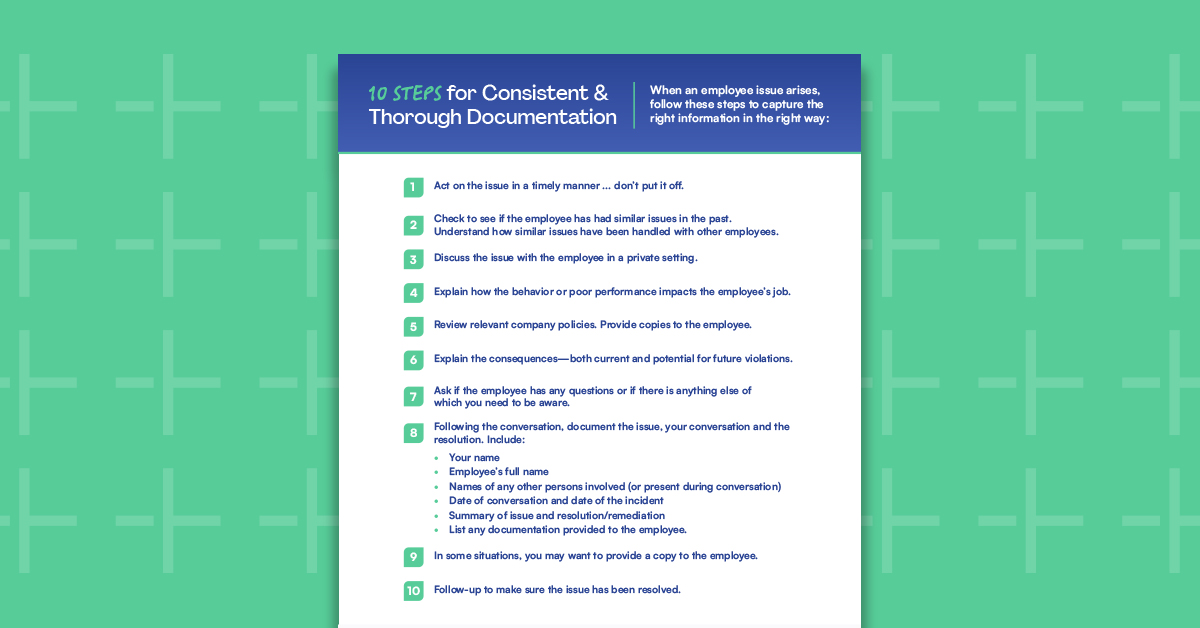Thorough workplace documentation is more than just a formality. Clear and organized documentation helps teams work together, reduces confusion and keeps critical information intact. Well-maintained employee records shield organizations and offer clarity when we need it most.
What is Documentation in HR and Employee Relations?
Documentation in HR and employee relations refers to the records of various employment activities and events. This includes vital documents such as employee history, incident reports, attendance records and performance evaluations. These documents provide a clear and comprehensive picture of each employee’s journey, highlighting successes like promotions and pay raises, as well as necessary disciplinary measures. Effective documentation is essential to ensure transparency, fairness and accountability in the workplace.
Why is Workplace Documentation Important?
Workplace documentation serves as a reliable record and eliminates room for uncertainties. Having detailed workplace documentation promotes accountability, consistency and compliance with company policies. Thorough documentation also helps prevent disputes and saves time reviewing historical employee information. In the event of litigation, it stands as a solid defense, serving as clear, recorded evidence.
Meticulous workplace documentation is essential, particularly in workplace investigations. These records provide a clear and objective look at events, actions and decisions, validating a credible investigation process and protecting your organization from potential legal challenges or disputes.
Types of Documentation
There are various types of employee documentation throughout the employee lifecycle. Whether standard documentation related to employee onboarding, performance check-ins or more specific documentation pertaining to issues like attendance or misconduct.
Performance Documentation
It’s important to keep clear records of employee performance. This includes self-assessments, quarterly and annual evaluations, recognition and awards, as well as details related to performance improvement plans, disciplinary action and attendance records.
Medical Documentation
Maintaining records of medical documentation for employees is crucial to ensure compliance and support. This includes keeping records of any disability or other medical accommodations, and any doctor’s notes related to absences or adjustments.
Investigation Documentation
Fundamental documentation when conducting a workplace investigation includes:
- Initial Complaint: What is the impetus for this investigation? Has one employee complained to human resources about the conduct of another? Has money or equipment gone missing? Or is a pattern of behavior being investigated? Whatever the reason for the investigation, documenting it as the starting point is key.
- Witness Interviews: If the conduct of one employee is discussed with another in passing, it is gossip. If it is documented as part of a workplace investigation, it is testimony. In this case, that documentation is the very key to investigation case management. Within this documentation, the reasons for the particular witness to be interviewed, and the notes taken during the interview should be maintained as part of the official record. If possible, to maintain the integrity of the interview, more than one person should sit in to conduct the discussion. In order to maintain the highest level of dignity within employee relations, witnesses should be treated in the exact same manner as one another.
- Statement from the Accused: The person or people being investigated must be given the opportunity to provide a rebuttal against accusations during an investigatory interview. Documenting every single word is crucial. Again, this is key, especially if a court trial ever occurs.
- Index of Evidence: Because so much data is gathered and reviewed in the course of an investigation, you will need to maintain an index of documentation in order to easily access what you need, when you need it. Case management software can be a lifesaver in this case, automatically adding information to a list as soon as documentation is logged. While this can also be done by hand, it can be much more time-consuming and tedious.
- Close-Out Report: This is the opposite bookend to the initial complaint that kicked off the investigation. The close-out report contains a narration of steps taken during your investigation, a final summation of the case, and the findings and disposition. This can be a very in-depth document and is the lasting record of relevant information and actions.
The list above only encompasses the different types of documentation you need to maintain during and after an investigation. Remember that something that seems insignificant when you start the investigation may, by the end of the case, prove to be your most important piece of data yet and help you to build the strongest and most accurate case possible.
Best Practices for Workplace Documentation
- Be specific and factual: Documentation should be precise, clear and rooted in facts. Avoid any assumptions, ambiguity and vagueness to minimize misunderstandings and errors.
- Balance accessibility and security: Make documents easily accessible to those who need them, but don’t compromise on security. Protect sensitive information with robust security measures and regularly review who has access to documents to maintain an appropriate balance.
- Establish consistency and cohesion: Ensure uniformity and clarity by using standardized formats and templates for all documentation. Maintain consistent structures for document title and content.
- Encourage feedback: Actively seek input from team members for areas of improvement and clarification.
Tips for Investigation Documentation
- Act on the issue in a timely manner… don’t put it off.
- Check to see if the employee has had similar issues in the past. Understand how similar issues have been handled with other employees.
- Discuss the issue with the employee in a private setting.
- Explain how the behavior or poor performance impacts the employee’s job.
- Review relevant company policies. Provide copies to the employee.
- Explain the consequences—both current and potential for future violations.
- Ask if the employee has any questions or if there is anything else of which you need to be aware.
- Following the conversation, document the issue, your conversation and the resolution. Include:
- Your name
- Employee’s full name
- Names of any other persons involved (or present during conversation)
- Date of conversation and date of the incident
- Summary of issue and resolution/remediation
- List any documentation provided to the employee.
- In some situations, you may want to provide a copy to the employee.
- Follow-up to make sure the issue has been resolved.
Download our guide for 10 steps for consistent and thorough documentation.

Improve Your Documentation with HR Acuity
Employee relations documentation is key to effectively managing workplace issues. Not only does it provide clarity into workplace issues and processes, but it also protects both the organizations and its employees. Poorly managed or non-existent documentation leads to misunderstandings, miscommunications and potential legal challenges. Comprehensive records help HR and ER professionals navigate complex employee relations issues with confidence and accuracy.
HR Acuity’s HR Case Management and Employee Relations software empowers you to document and manage workplace issues consistently, thoroughly and transparently. With HR Acuity, you can easily capture and access all relevant documentation in one place, ensuring it’s available whenever and wherever you need it—regardless of turnover and attrition.



